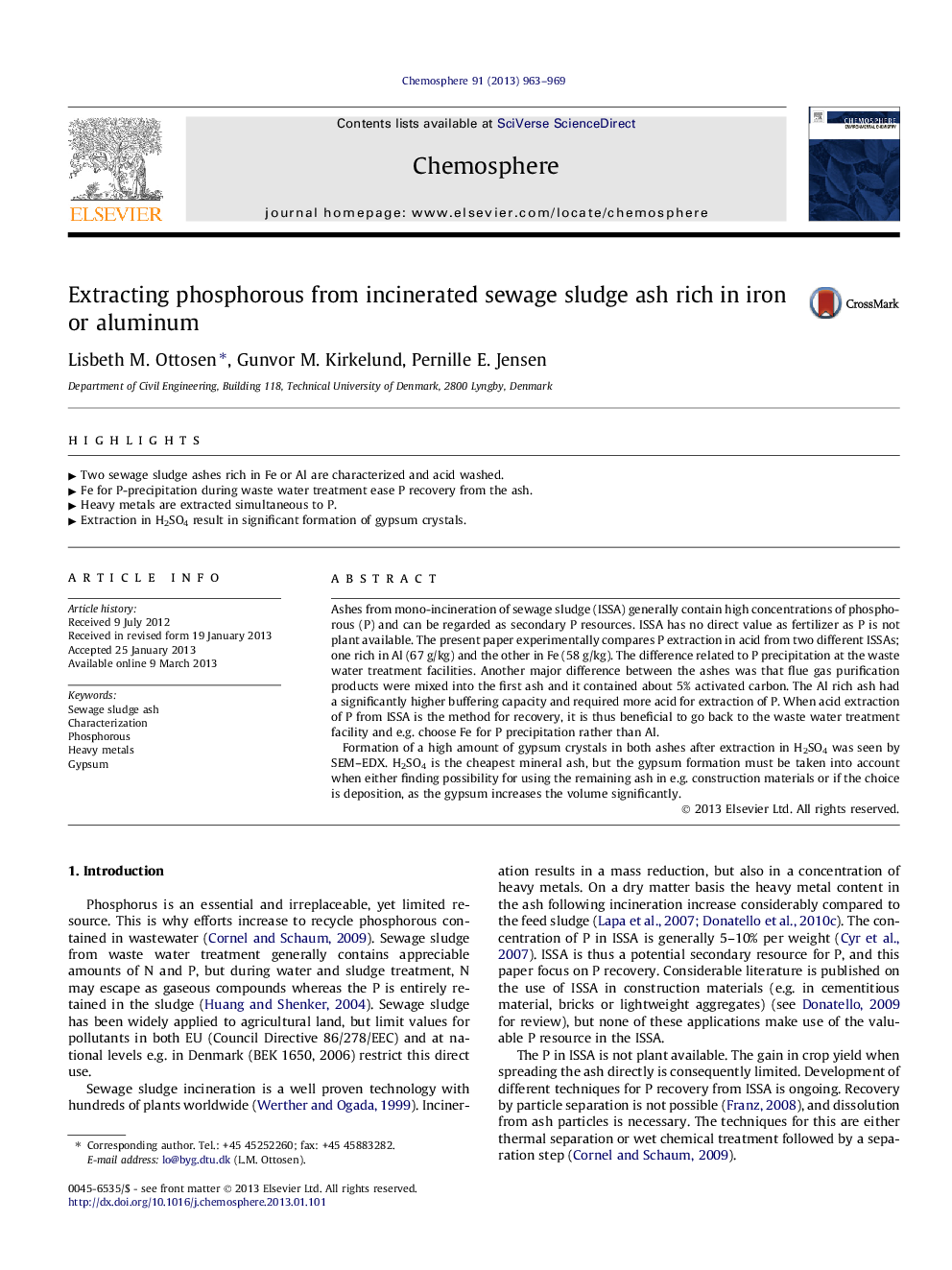| کد مقاله | کد نشریه | سال انتشار | مقاله انگلیسی | نسخه تمام متن |
|---|---|---|---|---|
| 4409352 | 1307479 | 2013 | 7 صفحه PDF | دانلود رایگان |

Ashes from mono-incineration of sewage sludge (ISSA) generally contain high concentrations of phosphorous (P) and can be regarded as secondary P resources. ISSA has no direct value as fertilizer as P is not plant available. The present paper experimentally compares P extraction in acid from two different ISSAs; one rich in Al (67 g/kg) and the other in Fe (58 g/kg). The difference related to P precipitation at the waste water treatment facilities. Another major difference between the ashes was that flue gas purification products were mixed into the first ash and it contained about 5% activated carbon. The Al rich ash had a significantly higher buffering capacity and required more acid for extraction of P. When acid extraction of P from ISSA is the method for recovery, it is thus beneficial to go back to the waste water treatment facility and e.g. choose Fe for P precipitation rather than Al.Formation of a high amount of gypsum crystals in both ashes after extraction in H2SO4 was seen by SEM–EDX. H2SO4 is the cheapest mineral ash, but the gypsum formation must be taken into account when either finding possibility for using the remaining ash in e.g. construction materials or if the choice is deposition, as the gypsum increases the volume significantly.
► Two sewage sludge ashes rich in Fe or Al are characterized and acid washed.
► Fe for P-precipitation during waste water treatment ease P recovery from the ash.
► Heavy metals are extracted simultaneous to P.
► Extraction in H2SO4 result in significant formation of gypsum crystals.
Journal: Chemosphere - Volume 91, Issue 7, May 2013, Pages 963–969